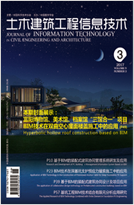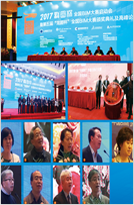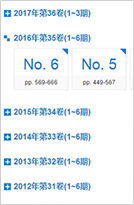2024, 16(3): 8-12. doi: 10.16670/j.cnki.cn11-5823/tu.2024.03.02
基于Revit的管道碳排放自动计算系统研究
沈阳建筑大学 管理学院,沈阳 110623 |
Research on the Automatic Calculation System of Pipeline Carbon Emissions Based on Revit
School of Management, Shenyang Jianzhu University, Shenyang 110168, China |
引用本文:
毕天平, 潘星任. 基于Revit的管道碳排放自动计算系统研究[J]. 土木建筑工程信息技术,
2024, 16(3): 8-12.
doi: 10.16670/j.cnki.cn11-5823/tu.2024.03.02

Citation:
Tianping Bi, Xingren Pan. Research on the Automatic Calculation System of Pipeline Carbon Emissions Based on Revit[J]. Journal of Information Technologyin Civil Engineering and Architecture,
2024, 16(3): 8-12.
doi: 10.16670/j.cnki.cn11-5823/tu.2024.03.02

摘要:管道碳排放自动计算系统对于管道设计阶段的碳排放预测和碳排放减少路径的研究具有重要意义。本文基于碳中和目标的背景,以《建筑碳排放计算标准》为计算依据,首先总结归纳出主要涉及的管道材料及其碳排放因子,根据BIM建模规范,指定相应的计算标准;其次基于Revit模型中管道的计算量、规格、材质等数据,采用碳排放因子方法,并使用C#+RevitApi对Revit进行二次开发实现了自动计算管道碳排放量的功能,该系统能够帮助设计师快速获取较为准确的管道碳排放量,在设计过程中优化了碳排放,证明了该系统具有广泛的应用前景和市场价值。
Abstract: The automatic calculation system for pipeline carbon emissions is of great significance for predicting carbon emissions and researching pathways to reduce carbon emissions during the pipeline design process. Aiming at carbon neutrality goals and meeting up with "Building Carbon Emission Calculation Standard," the main pipeline materials and their carbon emission factors are summarized and compiled in this paper. According to the BIM modeling specifications, corresponding calculation standards are specified. Then, based on the data of pipe quantity, specifications, materials, etc., in the Revit model, the carbon emission factor method is adopted, and the functionality of automatically calculating pipeline carbon emissions is implemented through secondary development by using C# + RevitAPI. This system can help designers quickly obtain relatively accurate estimates of pipeline carbon emissions and optimize carbon emissions during the design process. Therefore, the system has broad application prospect and market value.
| [1] |
Peng Cheng, Jiang Yi, Qin Youguo. Low carbon buildings and low carbon cities[M]. Beijing: China Environment Publishing Group, 2018. |
| [2] |
中国建筑能耗与碳排放研究报告(2022年)[J]. 建筑, 2023(02): 57-69. |
| [3] |
Crawford R H. Greenhouse Gas Emissions of Global Construction Industries[J]. 2022. |
| [4] |
罗智星, 仓玉洁, 杨柳, 等. 面向设计全过程的建筑物化碳排放计算方法研究[J]. 建筑科学, 2021, 37(12): 1-7+43. |
| [5] |
刘建文, 王金裕, 赵先超. 基于BIM的绿色建筑全生命周期环境影响评价与标杆树立研究[J]. 湖南工业大学学报(社会科学版), 2019, 24(01): 71-77. |
| [6] |
金海, 杨静, 李晓辉, 等. 基于BIM的建筑材料碳排放计量与实例分析[J]. 水泥技术, 2020(02): 54-58. |
| [7] |
仓玉洁, 罗智星. 工程设计中不同阶段建筑建材物化碳排放核算方法研究[J]. 城市建筑, 2019, 16(26): 33-35. |
| [8] |
Lee Y J, Jun H J. Development of a BIM-based Carbon Dioxide Emission Estimation System[J]. Architectural Research, 2016, 18. |
| [9] |
Jun H, Lim N, Kim M. BIM-based Carbon Dioxide Emission Quantity Assessment Method in Korea[J]. Journal of Asian Architecture & Building Engineering, 2015, 14(3): 569-576. |
| [10] |
Eleftheriadis S, Duffour P, Mumovic D. BIM-embedded life cycle carbon assessment of RC buildings using optimised structural design alternatives[J]. Energy and Buildings, 2018, 173: 587-600.doi: 10.1016/j.enbuild.2018.05.042 |
| [11] |
肖磊, 李智勇, 王聪, 等. 基于BIM的铁路物化阶段碳排放测算研究[J]. 建筑经济, 2022, 43(S2): 295-301. |
| [12] |
GB/T51366-2019. 建筑碳排放计算标准[S]. 北京: 中国建筑工业出版社, 2019: 2. GB/T51366-2019. |
| [13] |
李小冬, 朱辰. 我国建筑碳排放核算及影响因素研究综述[J]. 安全与环境学报, 2020, 20(1): 317-327. |
计量
- PDF下载量(26)
- 文章访问量(1273)
- HTML全文浏览量(518)















